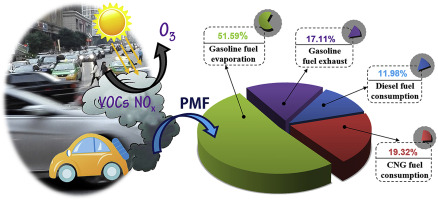VOCs are toxic chemicals that come from loads of home products and natural sources.

Volatile organic compounds, or VOCs are chemicals that are lighter than air at room temperature and are responsible for the characteristic smells of things like paint thinner and perfumes.
VOCs are characterized by having a high vapor pressure and low water solubility. This means they are relatively unstable at room temperature, and if not contained, they will float into the air in their gaseous state. Their low water solubility means these chemicals do not dissolve in water very well, if at all.
VOCs are commonly used as chemical solvents, or something that dissolves other chemicals, according to the U.S. Environmental Protection Agency. They are found in materials such as paints, petroleum fuels and pharmaceuticals, but VOCs are also naturally produced by animals, plants and microorganisms. Frequent exposure to VOCs is associated with adverse health effects such as respiratory irritation and even cancer.
Some VOCs are naturally produced by animals, plants and microorganisms, in which case they are more specifically called biogenic volatile organic compounds (BVOCs). The most prominent BVOCs are isoprene and monoterpenes, researchers reported in 1999 in the Journal of Atmospheric Chemistry. Both of these BVOCs are produced by plants, according to a 2014 analysis published in the journal Atmospheric Chemistry and Physics.
Plants produce about 90% of all VOCs in the atmosphere, and these chemicals play an important role in the chemical processes that occur in the atmosphere. For example, the VOCs released by a rainforest keep the atmosphere above it clean and chemically balanced by reacting with harmful pollutants in the air, but this doesn’t happen in areas devoid of plant life, according to a study published in 2008 in the journal Nature.
About 10% of VOCs in the environment are human-made and come from thousands of different materials. Common sources include petroleum fuels, hydraulic fluids, paint thinners and dry-cleaning chemicals, according to the EPA. VOCs are also found in many common household and office items, such as building materials, cleaning solutions, cosmetics, permanent markers, adhesives, printers and copiers.
Concentration of VOCs is usually two to five times higher inside homes than outside, and it can be up to 10 times higher, according to the EPA. Researchers with the EPA have also found that some VOCs can remain in indoor air for several hours at levels up to 1,000 times background levels outdoors.
The danger of VOCs to human health varies greatly depending on the specific chemical and exposure level. Nonetheless, many VOCs can cause health problems, especially if a person is exposed to high levels or even low levels for a long period of time.
One of the most well-known harmful VOCs is benzene, a known carcinogen, that is emitted by cigarette smoke, fuels, paints and cars. Sometimes VOCs, such as benzene, emit odors, but smell is not always a good indicator of the chemical’s potential health risk, according to the Minnesota Department of Health.
Another commonly encountered harmful VOC is perchloroethylene, which is commonly used for dry cleaning. Studies have found that people breathe in perchloroethylene when around or wearing dry-cleaned clothing, according to the EPA. Many dry cleaning businesses remove as much of the chemical as possible from the clothing, but if the clean clothing has an odor when it’s picked up, then it still has still perchloroethylene on it. In that case, it’s best to ask the cleaners to hold the items until they are done drying, and look for a new dry cleaning company.
Symptoms of high, short-term exposure to VOCs include eye, nose and throat irritation, headaches, nausea or vomiting, dizziness or worsening asthma symptoms. Exposure to VOCs for many years at high or even low levels can lead to cancer, liver and kidney damage or nervous system damage, according to the Minnesota Department of Health.
It’s difficult to pinpoint which VOC-emitting household products have the highest health risk because studies examine the toxicity of single chemicals, but not combinations, as is the case in most household products. The frequency and type of use can impact the level of health risk these chemicals have in a home. Details about the known health effects of specific VOCs can be found on the Centers for Disease Control and Prevention’s toxic substances database.
There are no federal or state standards for healthy VOC limits in non-industrial areas, so if you suspect VOCs may be causing health issues for you or others in your household, the Minnesota Department of Health recommends removing as many VOC-containing products as possible from the home. Also, store the products in an area people don’t frequent, such as a storage shed or garage. Increasing your home’s ventilation and keeping the home cool can also help, as materials release VOCs more in warm temperatures and stagnant air will hold VOCs for longer.
